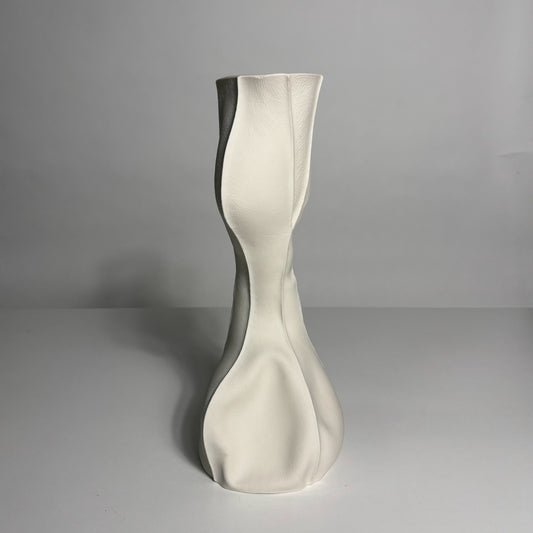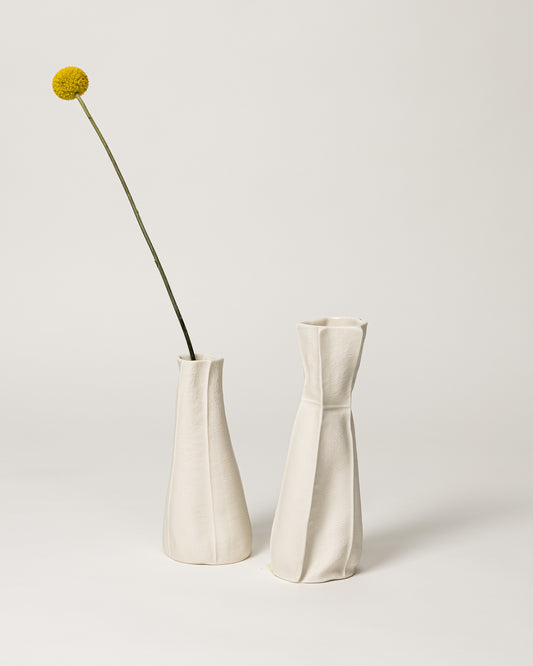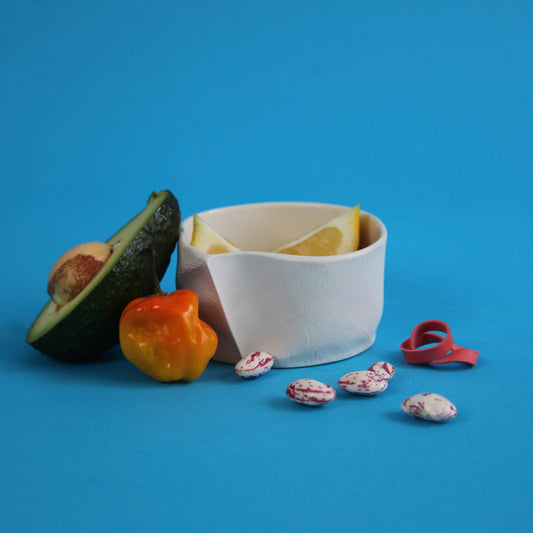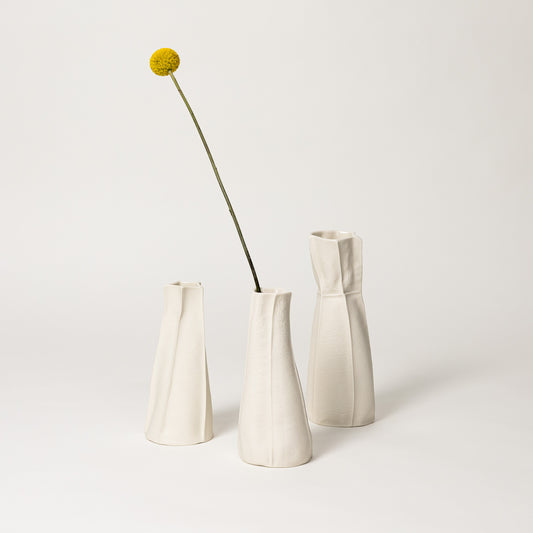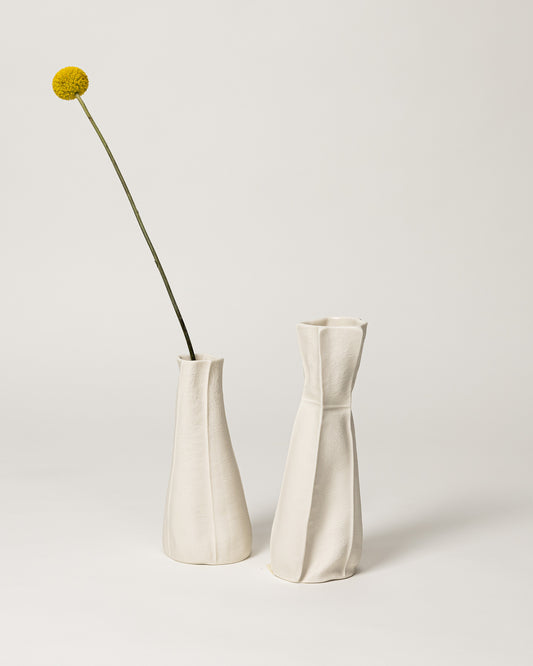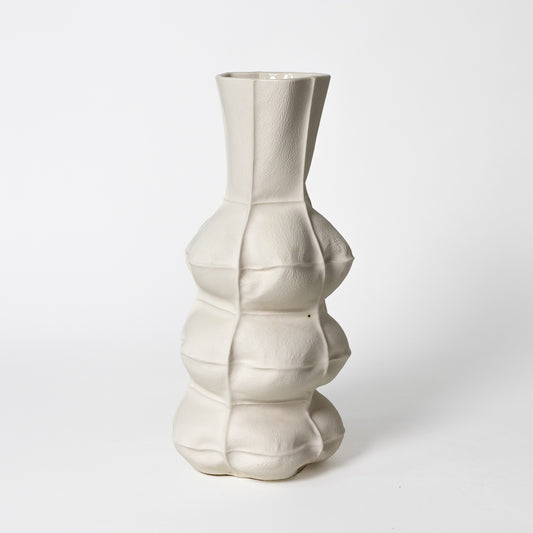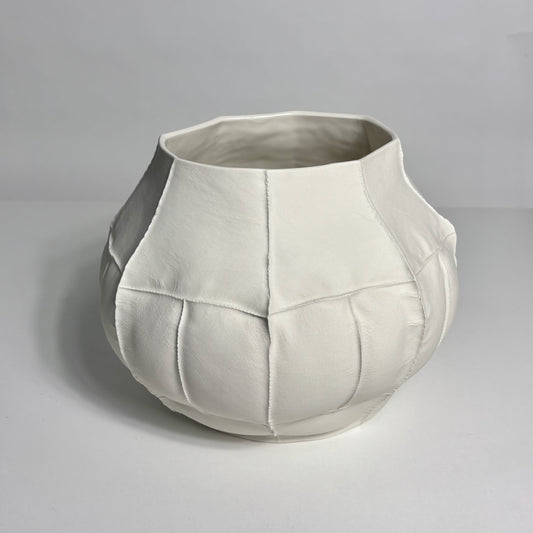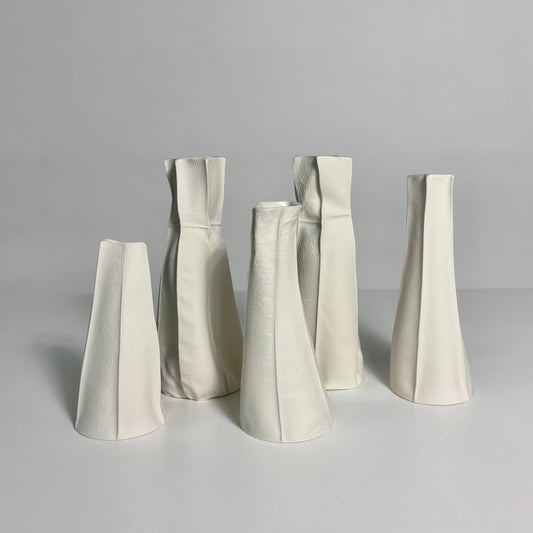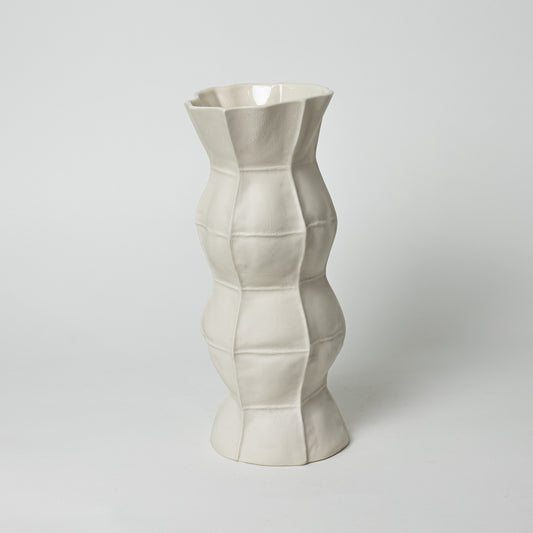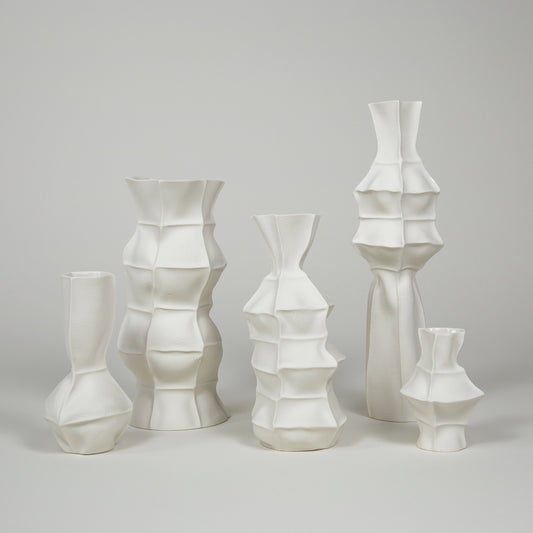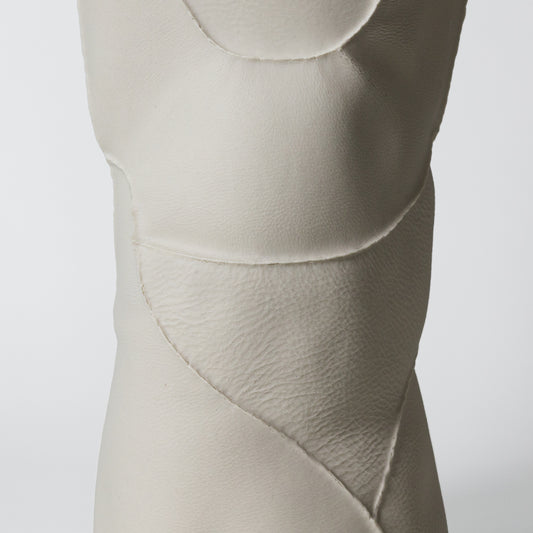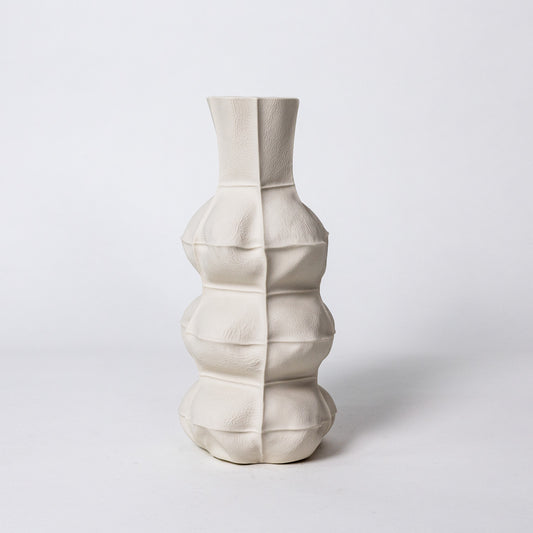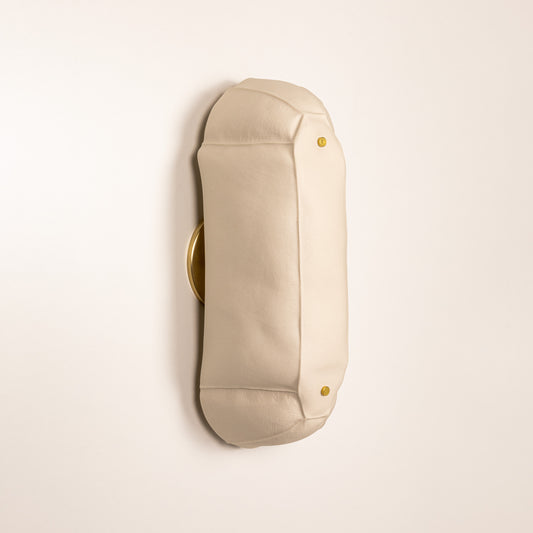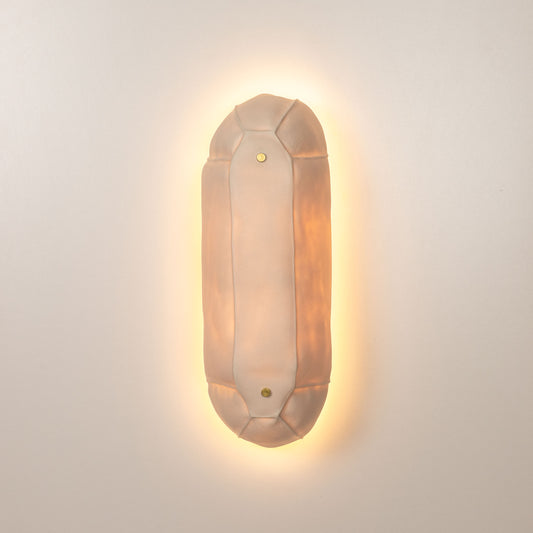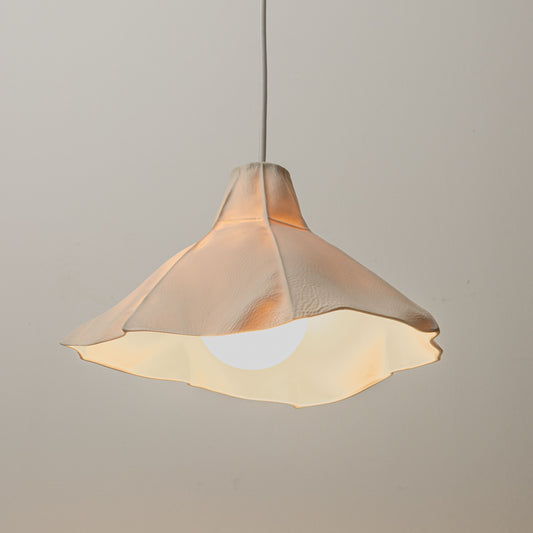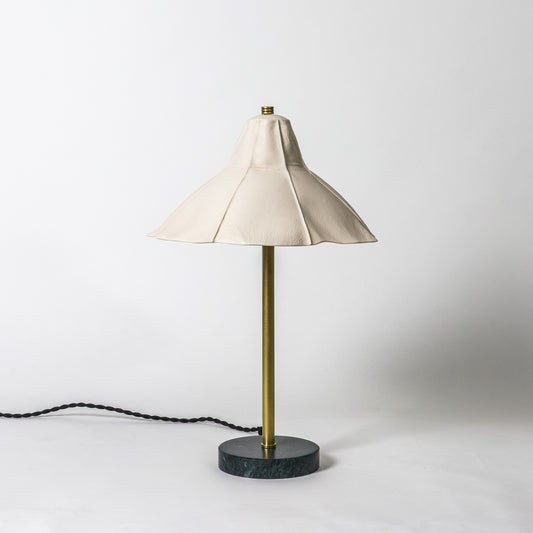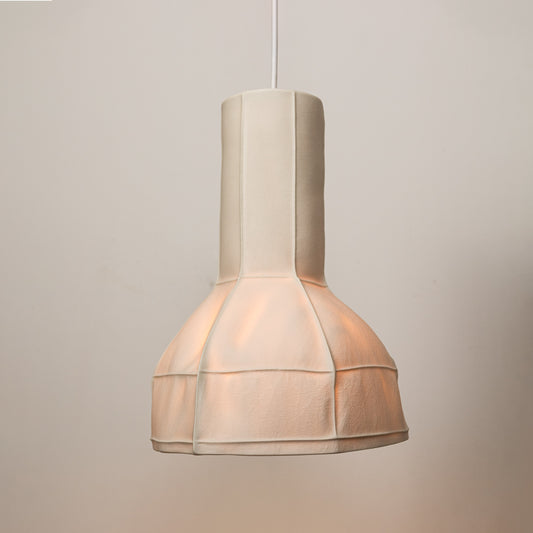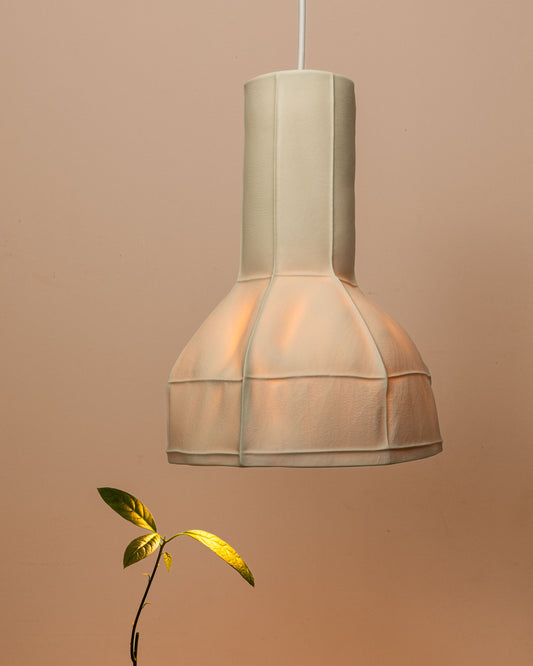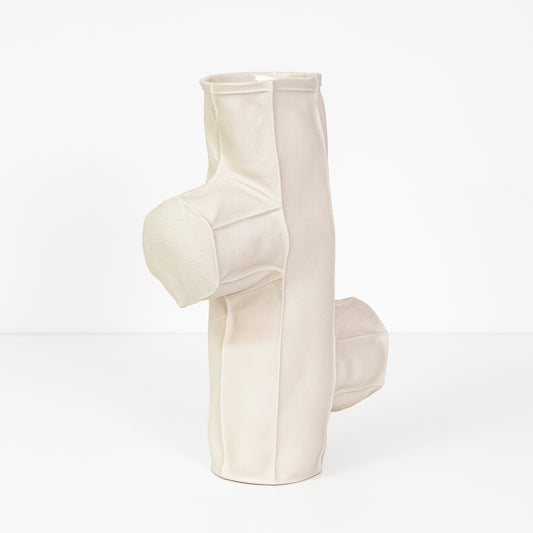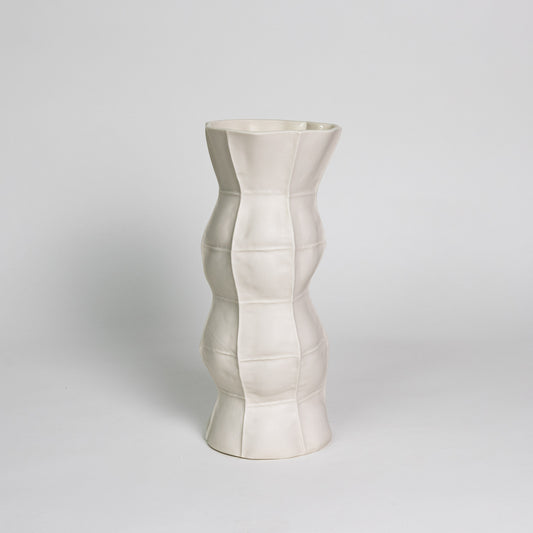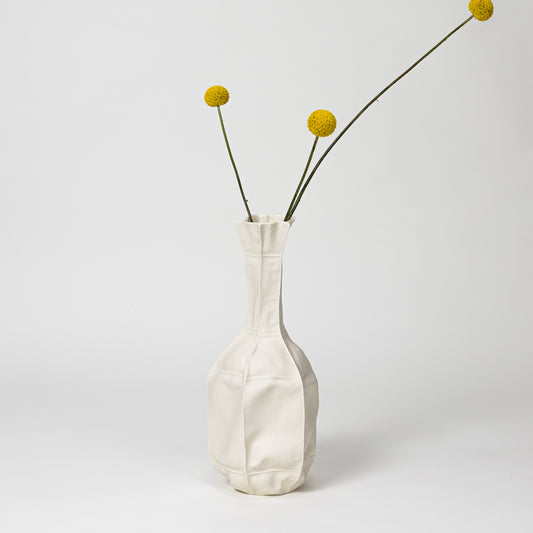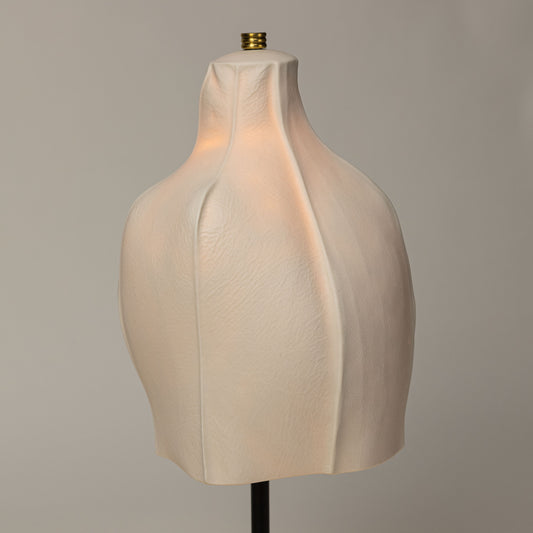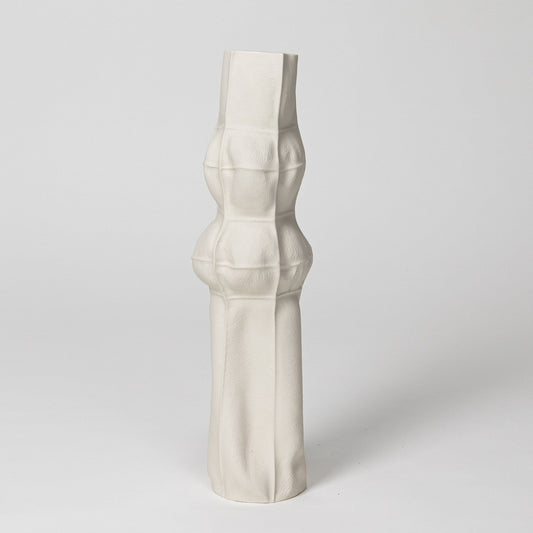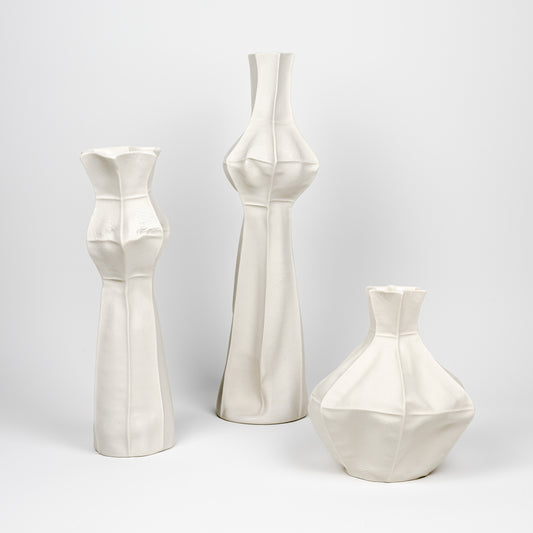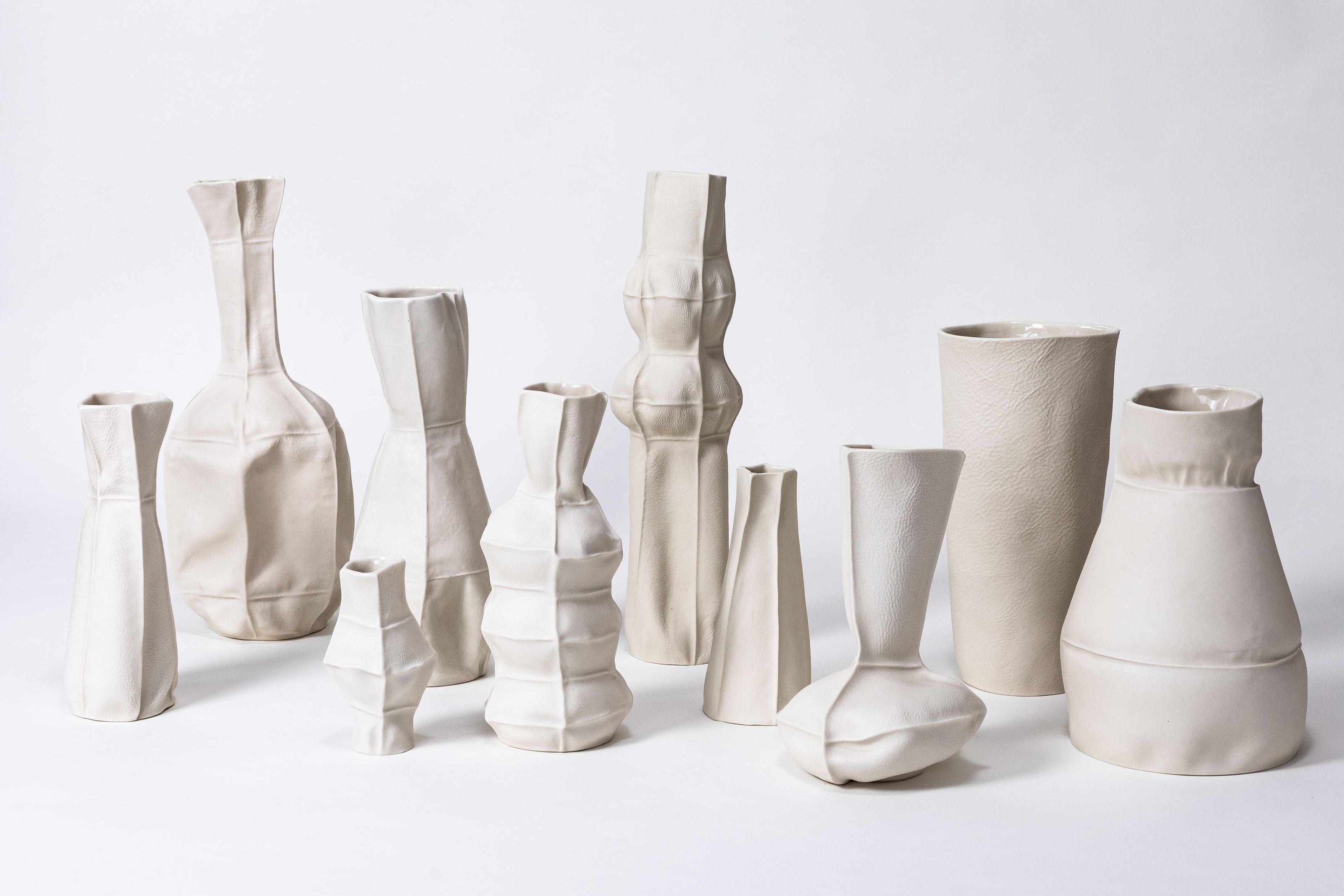
Kawa Series: Leather-Cast Ceramics
The Kawa Series is crafted using an unusual, painstakingly refined technique unique to Luft Tanaka. Each creation begins as a simple sketch, which is then transformed into a leather mold. After cutting, sewing, and preparing the mold for casting, liquid porcelain is poured inside, slowly forming a thin layer along the leather surface. Once the porcelain sets, the mold is carefully cut at the seams and gently peeled away, allowing the piece to be fired in a kiln.
-
IN-STOCK Kawa Vase 22
Regular price $1,400.00 USDRegular priceUnit price per -
IN-STOCK Kawa Vase 20
Regular price $1,200.00 USDRegular priceUnit price per -
IN-STOCK Kawa Vase 19
Regular price $800.00 USDRegular priceUnit price per -
IN-STOCK Pair of Kawa Vases 04 & 05
Regular price $600.00 USDRegular priceUnit price per -
IN-STOCK Kawa Small Dish
Regular price $120.00 USDRegular priceUnit price per -
IN-STOCK Kawa Vase 04
Regular price $275.00 USDRegular priceUnit price per -
IN-STOCK Kawa Vase 05
Regular price $325.00 USDRegular priceUnit price per -
IN-STOCK Kawa Vase 23 SECOND
Regular price $600.00 USDRegular priceUnit price per$1,200.00 USDSale price $600.00 USDSale -
IN-STOCK Kawa Large Vessel 01
Regular price $3,000.00 USDRegular priceUnit price per -
IN-STOCK Set of 5 Kawa Vases
Regular price $1,475.00 USDRegular priceUnit price per -
IN-STOCK Kawa Vase Zigzag
Regular price $1,000.00 USDRegular priceUnit price per -
Kawa Vases Set of 9
Regular price $8,400.00 USDRegular priceUnit price per -
Kawa Vases Set of 5
Regular price $4,000.00 USDRegular priceUnit price per -
Kawa Large Vessel 05.1
Regular price $5,600.00 USDRegular priceUnit price per -
Kawa Vessel 06
Regular price $3,500.00 USDRegular priceUnit price per -
Kawa Large Vessel 02
Regular price $3,000.00 USDRegular priceUnit price per -
Kawa Vase 23
Regular price $1,200.00 USDRegular priceUnit price per -
Kawa Wall Sconce 01
Regular price $1,800.00 USDRegular priceUnit price per -
Kawa Series Light 04
Regular price $1,600.00 USDRegular priceUnit price per -
Kawa Table Lamp 03
Regular price $1,900.00 USDRegular priceUnit price per -
Kawa Series Light 05
Regular price $1,600.00 USDRegular priceUnit price per -
Kawa Vase 18
Regular price $1,600.00 USDRegular priceUnit price per -
Kawa Vase Zigzag
Regular price $1,000.00 USDRegular priceUnit price per -
Kawa Vase 12
Regular price $1,200.00 USDRegular priceUnit price per -
Kawa Table Lamp 01
Regular price $1,600.00 USDRegular priceUnit price per -
Pair of Kawa Vases 06 & 07
Regular price $2,150.00 USDRegular priceUnit price per -
Pair of Kawa Vessels 10 & 12inch
Regular price $1,200.00 USDRegular priceUnit price per -
Kawa Vase 17
Regular price $900.00 USDRegular priceUnit price per -
Kawa Vases set of 3 01
Regular price $2,750.00 USDRegular priceUnit price per -
Kawa Large Vessel 03
Regular price $3,300.00 USDRegular priceUnit price per




